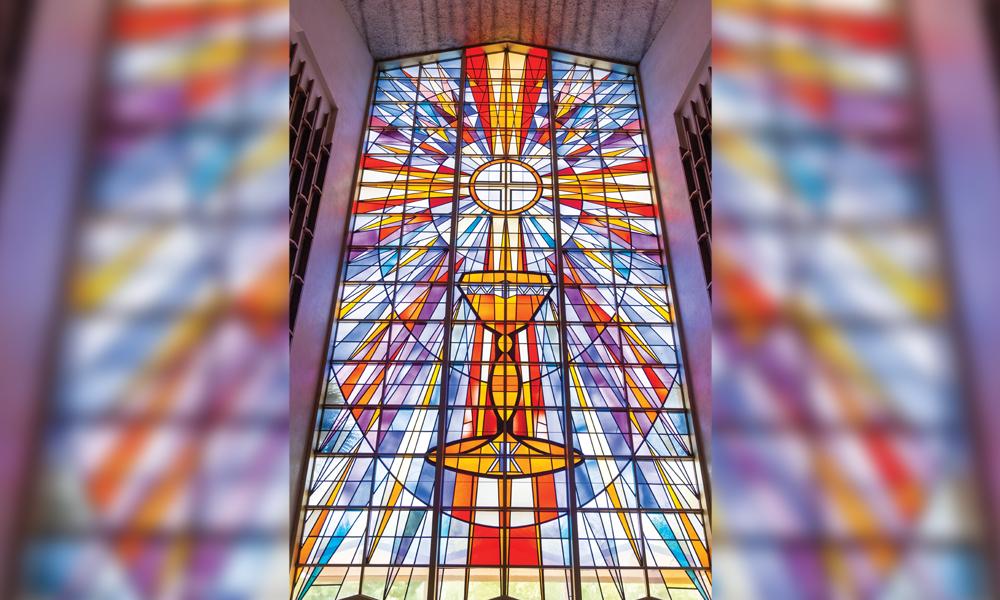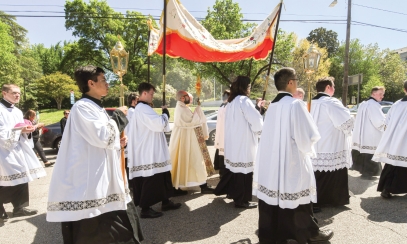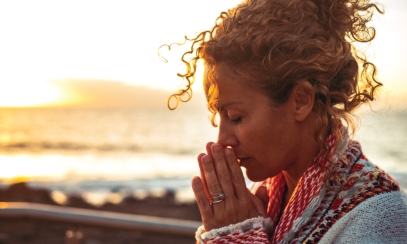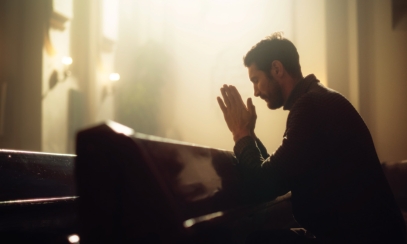
On Corpus Christi and eucharistic processions
The wonderful feast of Corpus Christi, which we celebrate two weeks after Pentecost, is one of the most important feast days on the calendar for Catholics. The name “Corpus Christi” is Latin for the Body and Blood of Christ. We celebrate the day with special traditions emphasizing the Real Presence of Jesus in the Eucharist. Normally, we have eucharistic processions in which the host, in the monstrance, is carried in procession either inside the church or through the streets near the church.
I was very privileged to share in an outdoor procession in Antigua, Guatemala. I was studying Spanish in 1988 in a six-week immersion program during the festival of Corpus Christi. Before the big day, artists used colored sawdust to create incredibly intricate murals called alfombras (the Spanish word for carpets) on the streets. After Mass, the procession, led by the monstrance, walked on these “carpets.” Then, of course, there was a big fiesta in the central square!
The origin of this great feast was the result of an early eucharistic miracle. In the year 1263, a priest named Peter of Prague was on a pilgrimage to Rome. He was a good priest, but at that particular time he was having serious doubts about whether Jesus was actually present in the consecrated host. He had stopped in the town of Bolsena in Italy (not far from Assisi) to celebrate Mass. He began celebrating Mass in the basilica of the early Christian martyr St. Christina. As he began to speak the words of consecration, actual blood began to seep from the host and trickle over his fingers and hands and onto the corporal, the white altar cloth. At first, the priest attempted to hide the blood, but when it continued, he had to interrupt the Mass. He asked to be taken to the nearby city of Orvieto, where the pope happened to be residing at that time.
Inspired by this eucharistic miracle, Pope Urban IV the next year, 1264, proclaimed a papal bull instituting the new feast of Corpus Christi for the entire Church. He commissioned St. Thomas Aquinas to compose an order of worship and prayers, which we still use today. The Pange Lingua Gloriosi, sung during the eucharistic procession at the end of Mass on Holy Thursday, and the Tantum Ergo, sung during Benediction, are from these hymns of St. Thomas Aquinas.
This is the reason I renovated the sanctuary in my last two parishes, placing the Eucharist in the center. It is crucial that we emphasize the Real Presence of our Lord in the holy Eucharist. May each one of us, like Pope Urban IV, St. Thomas Aquinas, Peter of Prague and so many others through all these centuries, celebrate with all our hearts the feast of Corpus Christi each year. May we also share lovingly in the special eucharistic processions held in countless parishes in every corner of the world!
“This is the reason I renovated the sanctuary in my last two parishes, placing the Eucharist in the center.”



